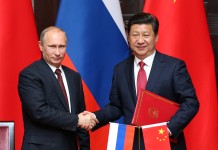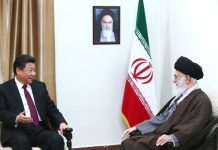Context
 North Korea finally tested its Taepodong-2 missile on April 5th, apparently with the intent of launching a satellite. Experts believe the Taepodong-2 can also be used for launching an Inter Continental Ballistic Missile. The test took place on the same day President Obama delivered a speech in Prague with a message on the future of Ballistic Missile Defense (BMD) System. North Korea took this step despite repeated warnings from other nations, including the United States, Japan and South Korea. Japan called for a Security Council meeting in the aftermath of the North Korean test, without any significant result. Russia and China did not consider the test to be a violation of any treaty.
North Korea finally tested its Taepodong-2 missile on April 5th, apparently with the intent of launching a satellite. Experts believe the Taepodong-2 can also be used for launching an Inter Continental Ballistic Missile. The test took place on the same day President Obama delivered a speech in Prague with a message on the future of Ballistic Missile Defense (BMD) System. North Korea took this step despite repeated warnings from other nations, including the United States, Japan and South Korea. Japan called for a Security Council meeting in the aftermath of the North Korean test, without any significant result. Russia and China did not consider the test to be a violation of any treaty.
The test attracted international attention and raised a question about what the test signified for the U.S., Europe, Russia and China at the present time, when the space arms race is heating up and both Iran and India have recently launched satellites into space?
The struggles for the balance of power on earth are shifting to and are going to be determined by whoever controls the space. The control of high seas and dominance in air are still important but this influence is most effective as part of the infrastructure supporting the network-centric operations, the essential components of which reside in space.
Analysis
In order to be a player in the space arms race, a nation must develop cutting-edge technologies for its surveillance through Space Situational Awareness (SSA) and Anti Satellite (ASAT) capabilities. These advanced tools can counter the mechanisms that support the Ballistic Missile Defense (BMD) Systems, which have the ability to intercept missiles in flight before they can hit their targets.
The recent tests conducted by India can also be understood as preliminary steps to entering the budding space arms race. On April 20, India’s smaller rocket, the Polar Satellite Launch Vehicle (PSLV), put in orbit a spy satellite. This satellite boasts capabilities missing from the ones India currently has. The government stated that it will use the Israeli satellite to predict floods, cyclones and paddy yields. In addition, most believe the satellite will be instrumental in monitoring the moves of unfriendly neighbors such as Pakistan and perhaps China. Experts state that the satellite can be used to track militant training camps and incoming hostile ballistic missiles.
China itself is aggressively pursuing the space dual use program, which supposedly has the capacity to counter the space infrastructure of global positioning and targeting systems. In January 2007, China tested its ground based laser ASAT capabilities by shooting down one of its aging weather satellites in space; in September 2008, it launched the BX-1 satellite, deployed through the Shenzou-7 spacecraft. Later the BX-1 satellite and the Shenzou-7 performed a fly-by of the International Space Station (ISS). Furthermore, it was reported that the test proved that the Chinese military can threaten the imaging reconnaissance satellites operated by the U. S., Japan, Russia, Israel and Europe. This had prompted the United States to launch its first National Space Policy after a hiatus of ten years.
Iran launched a satellite in February 2009, signifying that it too hast the ability to enter the space race. The developing Iranian and North Korean dual use space capabilities can be viewed as proxies for China’s and Russian goals to counter that of United States BMD system, the components of which are planned to be installed in the Russian Near Abroad (the Czech Republic and Poland).
The Russians believe that the BMD System is targeted against them, while the United States holds that the system is a protection against threats emanating from Iran and Middle East. Resurgent Russia can use Iran as leverage in its struggles with the United States, if the latter refuses to alter its plans regarding the BMD. China might turn a blind eye to North Korean developing ICBM’s, a potential threat to Europe and Northern America. On the other hand, India could become a proxy for the United States.
One thing is clear: international struggles are increasingly being played out in space, the next frontier.



